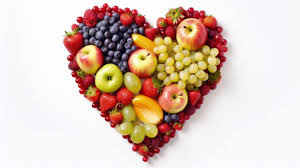

Organic fruit and vegetables have a higher content of total soluble sugars, aromatic compounds, organic acids, vitamin B and C, phenolic compounds, phytonutrients such as antioxidants, and amino acids in organically grown fresh produce Fruit is the sweet, fleshy, edible part of a plant. It generally contains seeds. Fruits are usually eaten raw, although some varieties can be cooked. They come in a wide variety of colours, shapes and flavours. Eating foods such as fruits that are lower in calories instead of higher-calorie food may be useful in helping to lower calorie intake. Fruits provide nutrients vital for health and maintenance of your body, such as fiber, vitamin C, potassium, and folate. As for the word “fruit” itself, it can be traced back to the Latin word fructus. This was itself derived from frui meaning “to enjoy.” When “fruit” first entered the English language, it described pretty much anything that could be grown from the ground (vegetables, nuts and so on). fruit, the fleshy or dry ripened ovary of a flowering plant, enclosing the seed or seeds. Thus, apricots, bananas, and grapes, as well as bean pods, corn grains, tomatoes, cucumbers, and acorns and almonds, are all technically fruits.Fruits are a good source of vitamins and minerals, recognized for their role in preventing vitamin C and vitamin A deficiencies. People who incorporate fruits and vegetables as part of a healthy eating pattern have a reduced risk of some chronic diseases.USDA's MyPlate encourages filling half of the plate with fruits and vegetables at mealtimes.Fruits are an important part of a healthy eating pattern and the source of many vital nutrients,including potassium, folate (folic acid), and antioxidants including polyphenols.Fruit such as blueberries, cranberries, strawberries and citrus also contain phytochemicals that are being studied for their added health benefits.